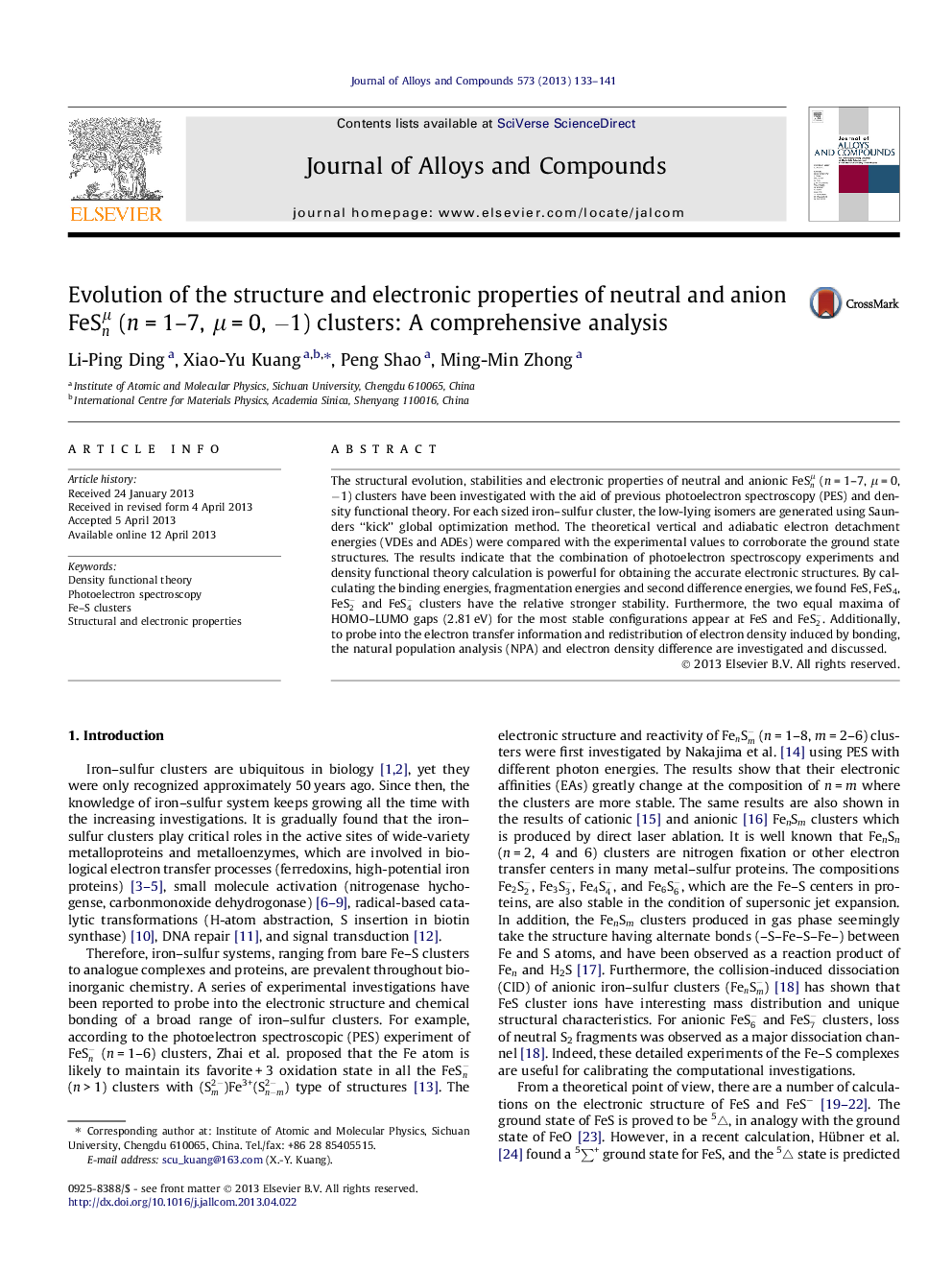| Article ID | Journal | Published Year | Pages | File Type |
|---|---|---|---|---|
| 1613914 | Journal of Alloys and Compounds | 2013 | 9 Pages |
Abstract
The structural evolution, stabilities and electronic properties of neutral and anionic FeSnμ (n = 1-7, μ = 0, â1) clusters have been investigated with the aid of previous photoelectron spectroscopy (PES) and density functional theory. For each sized iron-sulfur cluster, the low-lying isomers are generated using Saunders “kick” global optimization method. The theoretical vertical and adiabatic electron detachment energies (VDEs and ADEs) were compared with the experimental values to corroborate the ground state structures. The results indicate that the combination of photoelectron spectroscopy experiments and density functional theory calculation is powerful for obtaining the accurate electronic structures. By calculating the binding energies, fragmentation energies and second difference energies, we found FeS, FeS4, FeS2- and FeS4- clusters have the relative stronger stability. Furthermore, the two equal maxima of HOMO-LUMO gaps (2.81 eV) for the most stable configurations appear at FeS and FeS2-. Additionally, to probe into the electron transfer information and redistribution of electron density induced by bonding, the natural population analysis (NPA) and electron density difference are investigated and discussed.
Related Topics
Physical Sciences and Engineering
Materials Science
Metals and Alloys
Authors
Li-Ping Ding, Xiao-Yu Kuang, Peng Shao, Ming-Min Zhong,
